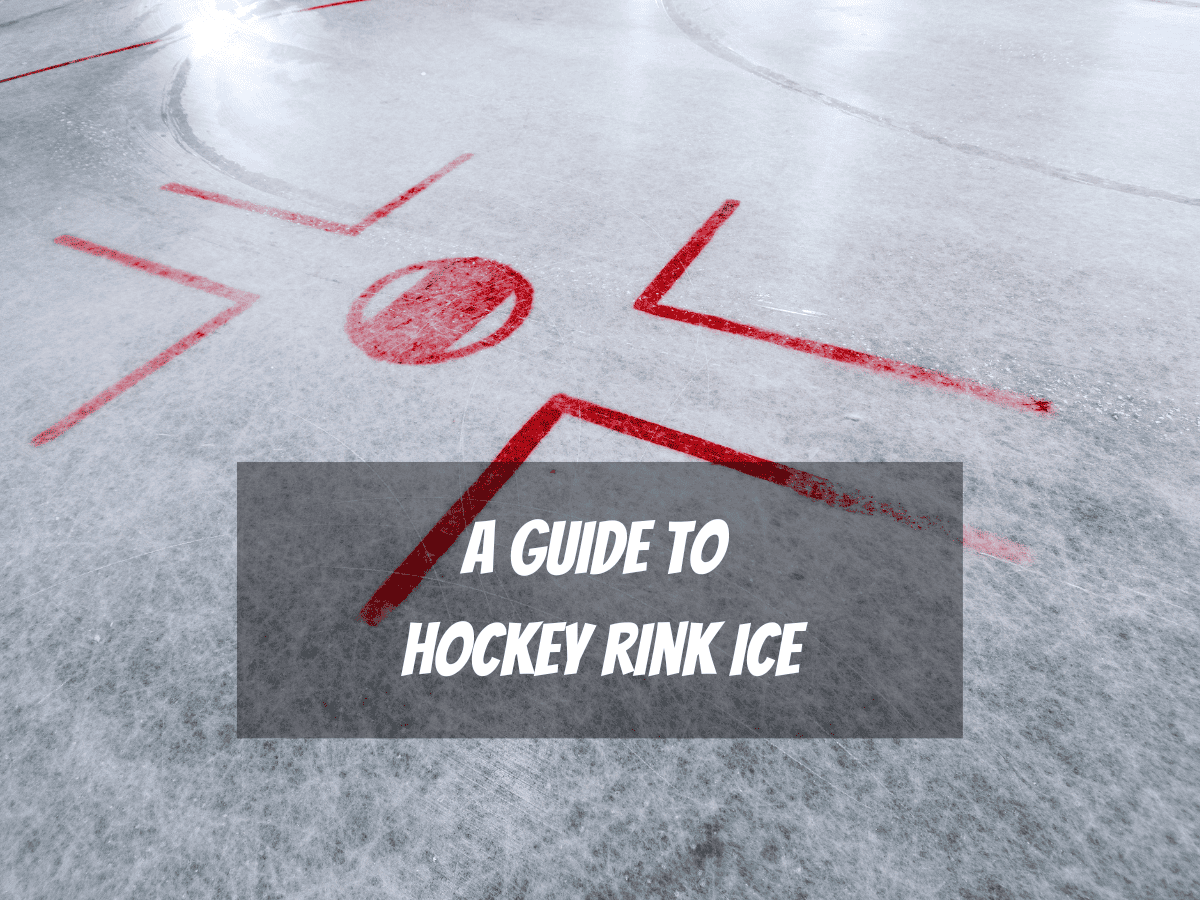Ice hockey is arguably one of the most popular winter sports out there.
Professional players need to demonstrate an excellent level of core strength, agility, and power on and off the ice in order to be successful.
Even though the traditionally Canadian sport was originally played on frozen lakes and ponds, ice hockey is most commonly played at indoor ice rinks.
This is a complete guide to the maintenance of this ice, the conditions required, and how thick it needs to be.
How Thick Is The Ice?
Firstly, how thick is the ice? Most indoor rinks have strict requirements that need to be adhered to.
This is to allow players to glide on the ice and move to where they need to be easily.
Minimizing the friction is an essential part of maintaining the ice on any hockey rink, although it is even more crucial within an Olympic or professional setting.
Even though an ice hockey rink holds dozens of players consistently, it is surprisingly thin.
The ice ranges in thickness from ¾ of an inch, to 1 ½ inch. That is actually thinner than a regular hockey puck!
Thinner ice is ideal for larger rinks because it takes far less time to completely freeze in comparison to thicker ice.
Thin ice is faster than thick ice, which makes it the most suitable option for ice hockey.
This is due to the high amounts of energy which are needed, and the fast-paced nature of the game overall.
Something that many people are unaware of is that there is a particular process involved in creating the ice.
It needs to be added in very thin layers starting on the cold concrete surface underneath.
This allows the ice to become solid, and extra strong for its intended use.
How Do They Add Markings?
One of the first layers of ice that is added to the rink is often painted white.
This makes the ice look white through these layers, and is a highly effective method to make the dark puck stand out on the ice.
A similar method of building up the layers is used when adding markings to a hockey rink.
Powdered paint is usually combined with water to make the blue lines, center position, and boundaries for players.
This is done when the ice hasn’t been fully added, so that multiple layers can be made without impacting the thickness.
When the colored markings are visible, the rest of the ice surrounds them.
As well as the multiple layers of markings that are made underneath the ice, the white base helps the markings to stand out to players and the crowd.
The Role Of The Zamboni

In terms of maintaining the ice, the Zamboni is one of the most essential pieces of equipment.
These machines apply a very thin layer of water that is hot enough to pour onto the ice, but cool enough to freeze into the surface.
This water will then become the smooth surface for ice skaters and hockey players to glide through easily.
Ice skates leave a great deal of track marks in the ice, which is why the Zamboni is frequently seen at the end of a hockey game once everything has finished.
Making a smooth surface with little friction is a must.
These vehicles are also excellent ice scrapers, which makes them ideal tools for all-round rink maintenance.
Keeping the rink smooth and in good condition is far easier with the use of a Zamboni, or ice scraping equipment.
What Is Underneath The Ice?
Immediately under the ice is a layer of chilled concrete. This is so the ice can easily stick to a surface for additional layers to be added.
Under this is a layer of insulation, and then a layer of heated concrete before reaching the ground underneath.
The heated layer of concrete is there in order to protect the ground underneath as well as the ice.
Without heated concrete, the ground below the ice would freeze solid. In turn, this can lead to cracks forming in the rink itself.
Some sports centers will use the ice rink for other purposes during the off season. This could be a basketball court, a gym, or more.
The type of use that the ice rink has been constructed for will typically determine what kind of material is underneath the ice.
How Often Is The Ice Melted?
This depends on the use of the rink year round.
However, the ice in an ice rink is typically removed at the end of a regular season, once the playoffs have finished.
This is once a year, although it can happen more frequently if the rink needs to be repaired in some way, or if there is a problem with the ice itself.
Gradually, the water at the bottom of the rink is heated and moved around to slowly melt the rest of the ice.
Once everything has had the chance to melt a little, chunks of ice are then removed from the rink until the surface underneath is visible.
In order to get everything ready for the next season, if the ice rink has been out of use for some reason, more than 10,000 gallons of water are needed to create the gradual layers.
This is because of the careful application process that is needed, and the additional details of the colored markings.
Summary
Hockey rinks are home to some of the most intense sports in the world.
For many, it is considered to be the most competitive sport ever, and it isn’t hard to understand why.
Surprisingly, the ice on a regular hockey rink is thinner than a hockey puck. This makes it easier to move fast on, and less likely to get soft.
There is a rigorous process involved in building up layers of ice for a hockey rink, with even more attention being given to markings.

